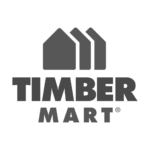Barricade™ Subfloor Air Plus Installation
Preparation
Subfloor panel preparations
- Make as much space as you can spare in the area where you will be laying the Barricade panels. Remember, you'll need space to stack the panels, which should be away from where you begin laying the floor.
- Sweep or vacuum the entire surface to remove any debris that may interfere with the proper seating of the Barricade panels. Visually inspect the floor area for bumps or ridges that will need to be removed before you begin.
Installation tools needed
- We recommend that the panels have a 1/4" space away from all perimeter walls and room obstacles, such as support posts or stairs, to allow for airflow and some expansion. Check with the lumber department for 1/4" wood strapping, off cut stock or other inexpensive 1/4" dimensional lumber that you could use as spacer material.
- We recommend that the panels have a 1/4" space away from all perimeter walls and room obstacles, such as support posts or stairs, to allow for airflow and some expansion. Check with the lumber department for 1/4" wood strapping, off cut stock or other inexpensive 1/4" dimensional lumber that you could use as spacer material.
- A circular saw and/or jigsaw
- A hammer or rubber mallet
- A carpenter's square
- A tapping block and pull bar
- Barricade™ leveling kits (based on the formula 1 kit / 60 panels)
- A sufficient quantity of 1/4" flooring spacers, to create the proper expansion space between the panel edges and the walls, or other fixed surfaces
- A dust mask or respirator for cutting panels outside
- A pair of safety glasses for eye protection
- Barricade™ Subfloor Air Plus is a floating subfloor. However, in some instances, we suggest that you fasten the panels to the concrete floor.
- We recommend that the panels have a 1/4" space away from all perimeter walls and room obstacles, such as support posts or stairs, to allow for airflow and some expansion. Check with the lumber department for 1/4" wood strapping, off cut stock or other inexpensive 1/4" dimensional lumber that you could use as spacer material.
- For homes where the basement may have an existing subfloor or covering over the concrete surface that may trap, block or absorb moisture, we recommend that it be removed prior to installing the Barricade™ Subfloor Air Plus Panels.
- Access to floor drains or clean-outs should be maintained and not restricted. Be sure to check with your local authority for building code recommendations before covering any basement floor drain or clean-out access. It is not a requirement to install a basement drain prior to installing a Barricade Subfloor Air Plus. If you install Barricade Subfloor Air Plus panels over a drain access, cut an access opening in the panel that rests over the drain. You can either reinstall the cut piece to cap off for future removal and maintenance or take the drain cover from the existing opening and use to cap off the top of the Barricade material or finished flooring material to allow for access.
- There are many conditions which can contribute to excessive moisture in a basement - house location, soil conditions, poor exterior drainage, construction, lack of or failure of waterproofing methods, hydrostatic pressure etc. Maintenance, repair and understanding how to control these factors will help to limit and prevent leakages or flooding from occurring.
Installation
- In your selected starting corner, lay the first panel with the tongue side flat against the spacers. Slide the next panel into place by connecting the tongue side into the groove of the first panel. Use a tapping block with a hammer to make sure this second panel is snug to the first panel, and to the wall spacer. Repeat this panel placement the length of the wall.
- Once you reach the last panel in the row, chances are good that you'll have to cut the panel to fit. Measure to fit tight against the 1/4" spacer. Cut the panel to size and press into place with the pull bar. Ensure the last panel is at least 3".
- Before you start the second row, check the first row for leveling and adjust any panels that bounce, with a Barricade leveling shim. Note that each row of Barricade Subfloor Air Plus should be staggered at their seams.
- Row #3 looks just like Row #1. Starting Row #3 with a full size panel will create the natural seam offset. Row #4 would be staggered again as in Row #2.
- The first three rows are the most critical to the success of a well formed subfloor. Take your time, and place down one row at a time installing tightly to prevent any seam separation.
- Continue to install the floor, checking for leveling and adjusting with Barricade leveling shims as necessary. Work from one side of the room to the other, one row at a time.
- When you reach the last row to complete your installation, chances are good that you'll have to cut the panel to fit. Measure for fit, keeping in mind the additional (1/4") expansion space from the wall that is required. Cut the panel to size and press into place with the pull bar.
- When all of your panels are in place, you may be able to remove the 1/4" spacers from around the perimeter of the room depending on the finished flooring application.
The Leveling Kit
- The leveling shims have been designed for use with the Barricade Subfloor Air Plus panels for areas where your basement floor is uneven. They simply fit over the cleats on the underside of the Barricade Subfloor panels, raising the panels to the desired level.
- Place the leveling shims over the area of the panel where you feel the height adjustment is necessary. Slide the square until it 'nests' or 'cups' into place on the underside of Barricade Subfloor Air plus panel.
- In some cases, you may need to stack 2, 3 or more leveling squares together to get the right height adjustment needed to level the panel. NOTE: Any dips or low spots in the concrete surface greater than 1/4 should be trowelled level with a Portland cement-based compound.
The Leveling Kit
- The leveling shims have been designed for use with the Barricade Subfloor Air Plus panels for areas where your basement floor is uneven. They simply fit over the cleats on the underside of the Barricade Subfloor panels, raising the panels to the desired level.
- Place the leveling shims over the area of the panel where you feel the height adjustment is necessary. Slide the square until it 'nests' or 'cups' into place on the underside of Barricade Subfloor Air plus panel.
- In some cases, you may need to stack 2, 3 or more leveling squares together to get the right height adjustment needed to level the panel. NOTE: Any dips or low spots in the concrete surface greater than 1/4 should be trowelled level with a Portland cement-based compound.
NOTE: If panels are to remain unfinished for a period of 2 weeks or longer it is recommended to seal BARRICADE™ Air Plus panels with two coats of polyurethane to protect from moisture.
To prevent panel uplift when stretching carpet, fasten Barricade Subfloor Air Plus panels to the concrete floor with flat head 1/4″ x 2 1/4″ or 2 3/4″ concrete fasteners every other panel at perimeter edges and one in the panel in the centre of the room. Use a 3/16″ x 4 1/2″ drill bit to bore the holes. Install tack strips on top of the Barricade Subfloor Air Plus panels around the perimeter of the room, to hold the carpet down. Install pad and carpet. Do not glue the underpad or carpet directly to the Barricade Subfloor Air Plus panels.
1/4″ plywood underlayment approved for use with sheet vinyl or adhesive-backed vinyl tiles should be fastened to the Barricade Subfloor Air Plus panels. We do not recommend lauan plywood as an underlayment. Use 3/4″ flooring fasteners that do not penetrate the moisture barrier on the underside of the Barricade Subfloor Air Plus panels. Do not glue the plywood underlayment to Barricade Subfloor Air Plus panels. Do not glue adhesive-backed vinyl tiles directly to the Barricade Subfloor Air Plus panels. Glue the vinyl floor to the plywood underlayment according to the vinyl manufacturer’s installation instructions. Only remove the 1/4″ wall spacers after the vinyl floor has been installed.
Fasten each Barricade Subfloor Air Plus panel with five, flat head and countersunk, concrete fasteners to the concrete floor to prevent movement or shifting of the finished ceramic tile floor. We recommend one in each of the four corners and one in the centre of the panel. Use flat head 1/4″ x 2 1/4″ or 2 3/4″ concrete fasteners and a 3/16″ x 4 1/2″ drill bit to bore the holes. Next install an approved tile underlayment over Barricade Subfloor Air Plus making sure you follow their installation guidelines for installing over a wood subfloor. NOTE: Barricade Subfloor Air Plus must lay perfectly stable. A sound recommendation would be to have one person walk the floor. Step heavy or bounce, with another looking for vertical movement of panels. If there is noticeable movement, mark the areas in question with an X and insert another concrete fastener. Please note that we also do not recommend gluing underlayments or other wood flooring materials to Barricade Subfloor Air Plus.
Follow the wood manufacturer’s guidelines as to what can be installed at or above grade and below grade. The National Wood Flooring Association defines below grade as any part of a concrete floor that is 4″ or more below the soil level. Before installing glue-down or nail-down floors a 3/8″ plywood underlayment should be fastened to Barricade Subfloor Air Plus using 18 gauge 3/4″ or 7/8″ narrow crown staples. When installing nail-down floors test a piece of the finished floor to make sure the fastener does not puncture the plastic membrane. Remove the 1/4″ wall spacers after the wood flooring has been installed. NOTE: Do not glue engineered hardwood floors directly to Barricade panels.
Install the floor manufacturer’s foam pad and finished flooring on top of the Barricade Subfloor Air Plus panels. The installation of a continuous vapour barrier on top of Barricade Subfloor Air Plus is permitted as long as it is not sealed to the perimeter wall.
NOTE that the installation of a continuous vapour barrier on top of Barricade Subfloor Air Plus is permitted as long as it is not sealed to the perimeter wall. Only remove the 1/4″ wall spacers until after the laminate floor has been installed.








